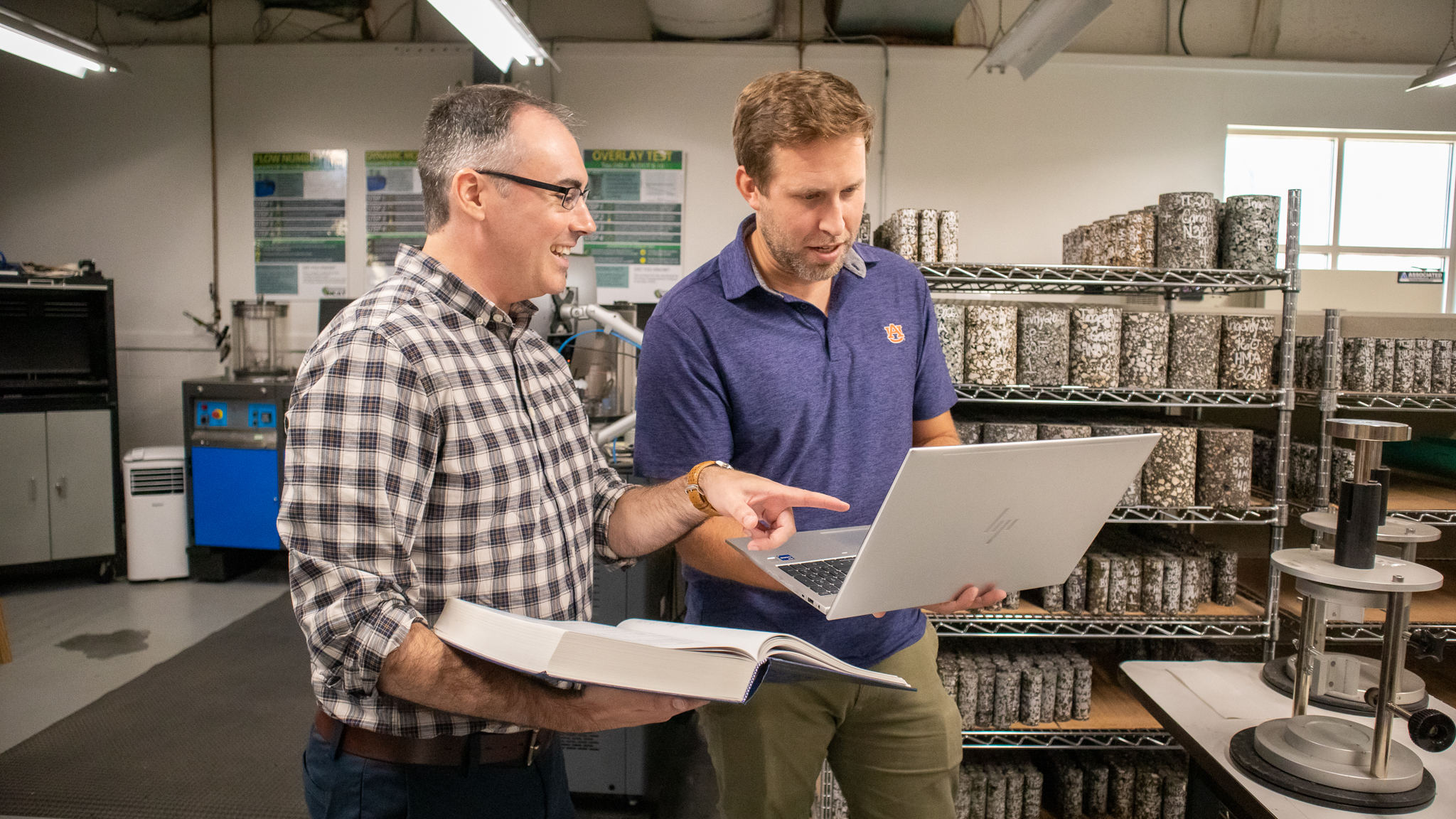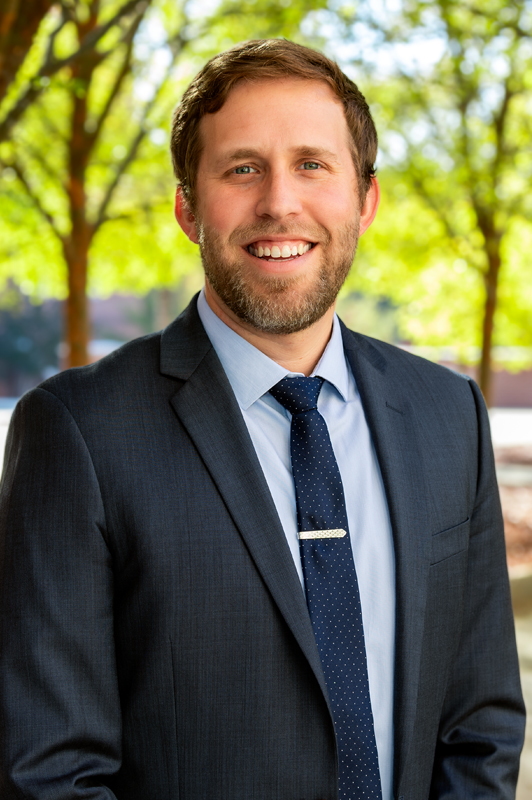Civil and Environmental Engineering faculty plan to help agencies implement resilience planning to everyday operations
Published: Aug 12, 2024 12:00 PM
By Dustin Duncan
If a hurricane is forecasted, can agencies maintain people's day-to-day activities without much interruption once it's over? If there's a major flood, can people still get groceries, medicine and essentials without major inconvenience?
These are the solutions Jeff LaMondia, professor in the Department of Civil and Environmental Engineering, and Ben Bowers, assistant professor in civil and environmental engineering, are attempting to solve through developing new procedures that change the way local and state agencies think about transportation resiliency. With support from Tensar, a division of CMC, a global leader in geosynthetic solutions for transportation applications, LaMondia and Bowers recently surveyed Departments of Transportation (DOTs) and Metropolitan Planning Organizations (MPOs) across the country. They aimed to understand how these agencies view resilience and incorporate it into their decision-making and funding processes.
"We found that a lot of current resilience work is reactionary," LaMondia said. "For example, it’s common to hear DOTs build more resilient bridges only after they’ve been damaged or lost during a flood. This is costly and negatively affects the whole transportation system as the bridge is replaced. It would be much better to proactively identify infrastructure adaptations to prevent issues before they happen. We also learned many DOTs and MPOs want to be able to do this but lack guidance.”
Further complicating the issue, MPOs’ and DOTs’ funding allocation processes force them to choose between resilience projects and other infrastructure maintenance or expansion projects. These project characteristics, known as performance measures, make resilience a competitive goal rather than a synergistic one.
In response, LaMondia and Bowers developed the Performance-based Resilience Evaluation Process (PREP) for transportation resilience decision-making. This process integrates resilience measurement into the FHWA-mandated Performance-Based Planning Process (PBPP), which uses performance-measures to forecast how communities will change and evaluate solutions to mitigate potential challenges arising in the next 20 to 25 years. Most notably, PREP incorporates resilience as an inherent component of existing performance measures, rather than a competing additional category.
“A lot of agencies are doing resilience planning separate from their long-range planning. This means that when they go to allocate funds for projects, resilience is considered a competing performance goal,” LaMondia said. “But we know that isn’t the way things work. Infrastructure strength, operations, maintenance and other federally mandated performance measures are inherently based on resilience, so we are giving agencies a way to more accurately account for this relationship.
Because extreme conditions are likely to continue and become more intense, how do agencies incorporate resilience into the planning process? LaMondia said the survey told them a couple of things.
They found that many agencies lack the resources, budgets or time to develop new resilience systems. Second, the implementation needs to build on the data collection, processes and language that the federal government and state DOTs are already using.
The report goes through each step of the planning process, discussing how resilience can be incorporated and then specifically saying to incorporate its performance measures. It's not just looking at the state of the current system but the day-to-day operations through the next 20 years, including temperature and the likelihood of extreme hazard events in that area. Then, the report looks at how to incorporate that information into performance measures.
"PREP is powerful because it works within the current planning process. We’re adapting definitions and calculations within traditional planning processes so resilience is a fundamental part of the funding conversation instead of something to be considered afterward,” LaMondia said. “Our approach provides decisionmakers with defendable data to support resilient infrastructure.”
Paul Schmitz, CPM Market Manager for Public Roads at Tensar, said the partnership between Tensar and Auburn Engineering is a positive step to improve planning processes throughout the country.
“Tensar is excited to work with Auburn University Department of Civil and Environmental Engineering to create an approach for transportation engineers and DOT agencies throughout the country to incorporate resilience performance measures in their road planning and design,” Schmitz said. “Our clients and partners understand how crucial resilient roads and bridges are to our communities, and we are committed to supporting efforts that improve their performance and resiliency. That is why we continue to work with academia like Auburn, are founding members of the Resilient Roads Roundtable, and invest in creating new materials and methods for the resilient roads.”
One of the other things they learned is that agencies are interested in resilience, but they aren't sure how to do it or are tentative about allocating funds for projects due to strict federal government guidelines. LaMondia said their process would make agencies more efficient with funding.
“Rather than finding funds to replace infrastructure after its been damaged by a hazardous event, PREP allows DOTs and MPOs to be more thoughtful in how they allocate funds for resilience planning. Our goal is to have resilience be a normal part of everyday operations,” LaMondia said.
Media Contact: , dzd0065@auburn.edu, 334-844-2326
Jeff LaMondia, professor in the Department of Civil and Environmental Engineering, (left) and Ben Bowers, assistant professor in civil and environmental engineering, (right) analyze data to help local and state agencies incorporate transportation resilience policies into their everyday planning.



